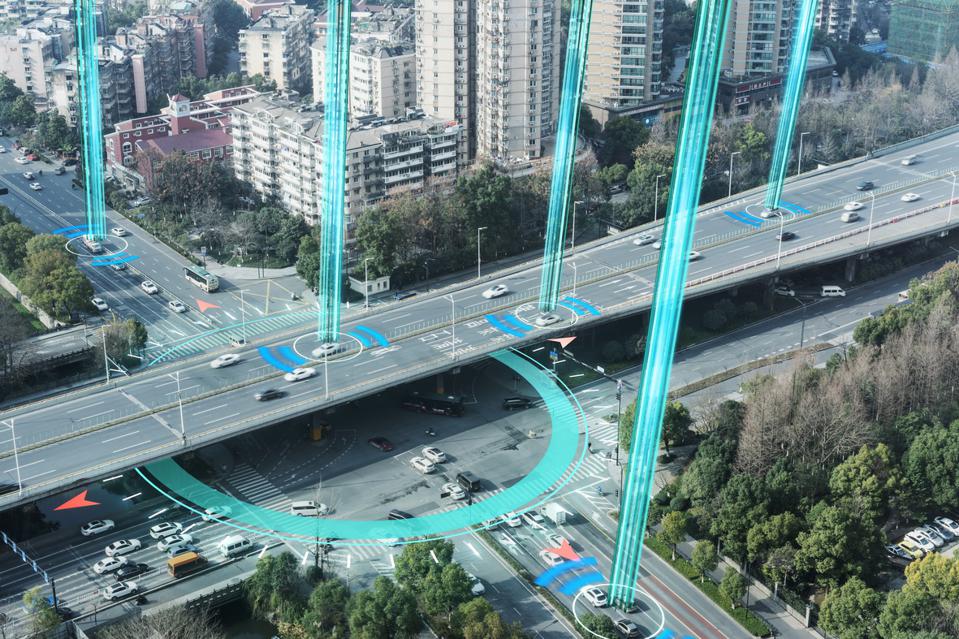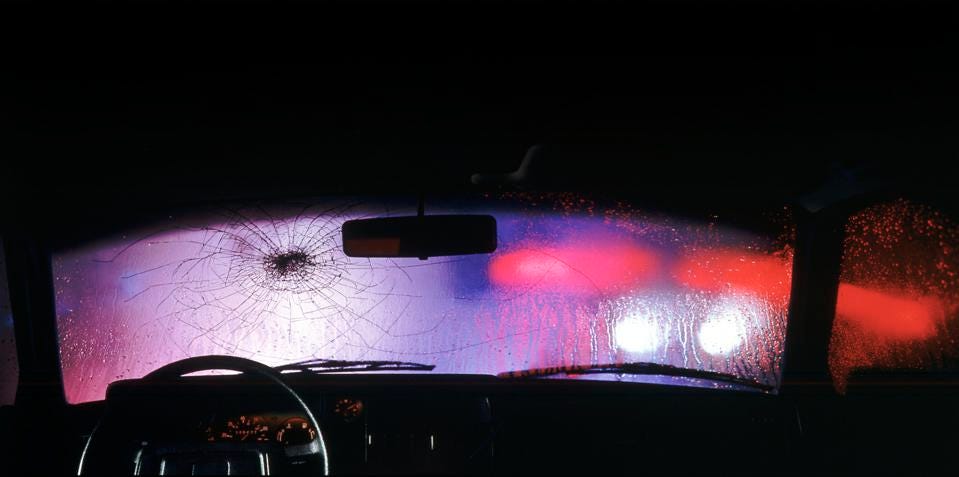
Roadway markings keep drivers safe, and it’s as simple as that. That’s why we have government agencies whose jobs are to manage and allocate resources to stripe roadways. However, the methods for collecting this data and finding areas of concern have become outdated and ineffective. According to the Federal Highway Administration, “From 2016 to 2018 an average of 19,158 fatalities resulted from roadway departures, which is 51 percent of all traffic fatalities in the United States.” From a Vision Zero perspective, this statistic is simply unacceptable.
In efforts to save lives from lane departures, the Federal Highway Administration issued a final rule for setting a minimum standard for nighttime pavement marking reflectivity, effective September 6, 2022. Until now, agencies were only required to make sure paint lines were visible at night. In essence, this sounds sufficient, but there was never any specification as to how visible markings must be, leading to confusion and inadequate management throughout agencies, reflected by the staggering statistic mentioned above.
The FHWA’s final rule “establishes minimum maintained retroreflectivity levels for longitudinal pavement markings on all roads open to public travel with speed limits of 35 mph or greater.” These pavement marking improvements are eligible for 100% federal funding.
When there are safety-critical issues and human lives involved, inadequacy is not an option. The nighttime fatality rate is nearly three times that of the daytime fatality rate. With the new rule, the FHWA hopes to prevent some of these severe crashes.
It’s possible, but not definite. Whether or not this rule is effective depends on the technologies and methods that agencies choose in order to collect the data and insights necessary to properly allocate restriping resources. This means doing things differently and innovating the way we think about maintenance detection.
A few aspects of the new rule have proven to be very controversial and for good reasons. Many agencies claim the rule does not go far enough and leaves too much room for ambiguity. For example, the rule does not specify how agencies must monitor pavement markings. It merely requires agencies to implement a method within four years for maintaining these new standards. The rule also doesn’t set compliance dates. Agencies determine these schedules according to the methods they choose.
While leaving room for ambiguity and not setting parameters can lead to confusion and inaction, it also grants freedom to agencies to invest in innovative technologies and new methods. Agencies know that many previous methods of management and data collection have become obsolete. They also know that data and insights are vital when it comes to managing employees and resources—not to mention the fact that we are at the forefront of autonomous driving, which requires paint lines to be visible at all times to avoid machine-driven lane departures.
Detection is the first step in fixing a maintenance issue. Currently, detections rely on agencies sending out employees to drive roads and conduct manual inspections. This requires time, money and human hours. There are technologies and resources available to completely automate this process so that departments can spend more time fixing issues rather than finding them.
By combining the use of visual imagery on roadways and artificial intelligence, agencies can automatically detect areas of concern. These kinds of detections can be delivered in real time and at a lower cost. This kind of technology not only detects issues but also notifies departments, and insights can be automatically uploaded into a workflow to increase the speed and efficiency with which they are addressed.
Technologies like this are already being used on roadways. As interest in digital twins of roadways increases, we are starting to see departments invest in AI to give them real-time insights into the conditions of roads. For example, TxDOT invested in Rekor’s AI-driven solutions in order to receive real-time updates on incidents to improve response times and overall roadway safety. (Blyncsy is a partner of Rekor but has no involvement in the project cited.)
Although many agencies still use manual methods because the ease and familiarity of these processes seem more efficient than learning a new method, change can offer new opportunities that previous methods could have never allowed. When looking at these newer innovations, it’s important to remember that agencies no longer have to dedicate man hours to searching for problems. By automating inspections, agencies can actually spend more time fixing issues, rather than searching for them. However, it’s also important to look for solutions that are customizable. No place is the same—every town, city and state experiences different problems, from weather to public policies. Identifying a company that is willing to understand an agency’s needs and create a solution that caters to those needs will determine whether or not the innovation will be successful.
you may also like
California’s new AI initiative opens the door for mass adoption for transportation infrastructure management
California Governor Gavin Newsom’s recent executive order signals California’s bold step towards embracing artificial intelligence as a…
The North Central Texas Council of Governments (NCTCOG) allocated funding to its member agencies
In a promising development for the safety and efficiency of North Central Texas roadways, the North Central…









